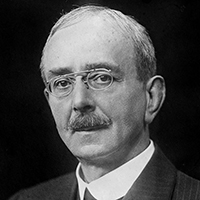 For National Science and Engineering Week , we are celebrating 10 great scientific advances made at the University of Liverpool. Over the 10 days of the event, we will be highlighting a different research discovery each day to show what science can achieve.
For National Science and Engineering Week , we are celebrating 10 great scientific advances made at the University of Liverpool. Over the 10 days of the event, we will be highlighting a different research discovery each day to show what science can achieve.
Our fourth research project in the series is from 1932 and won the prestigious Nobel Prize.
Sir Charles Scott Sherrington discovered, whilst he was Professor of Physiology at the University, that roughly two thirds of the fibres in a nerve supplying a muscle are ‘motor’ (responsible for movement), whilst the remainder are ‘efferent’ (carrying motor impulses away from the central nervous system). This discovery is known as Sherrington’s Law and he was awarded the Nobel Prize in 1932.
Put simply and in his own words: “Desistence from action may be as truly active as is the taking of action.” Sherrington is just one of nine Nobel Laureates associated with the University, including four in medicine and physiology.
To see the other nine great advances, visit the University’s news pages during National Science and Engineering Week (14-23 March).
If you want to find out more about current research in this area at the University of Liverpool, visit the Institute of Translational Medicine’s website, or go to our study pages to find out more about studying physiology.
